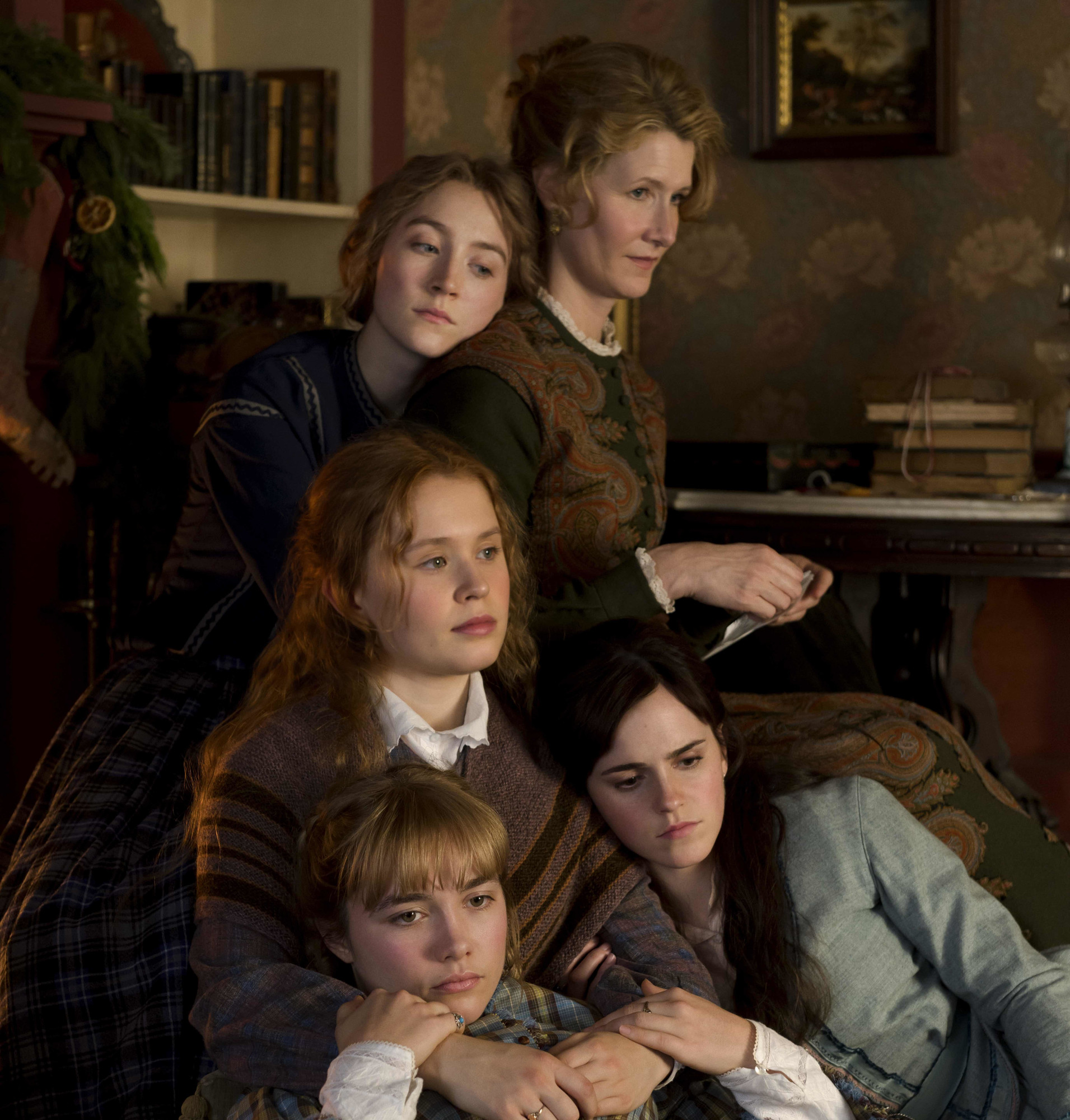Louisa May Alcott’s “Little Women” displays, through a modern lens, the various forms of fluid feminine expression, which we have coined “the femininity spectrum.” The femininity spectrum is a term used to identify and characterize the different forms of female gender expression. Femininity, like most forms of gender expression, can be executed in various formats and degrees, ranging from more stereotypical or traditional to more radical, masculine approaches to womanhood or gender expression. In “Little Women,” the distinct character of the three main protagonists, Jo, Amy and Meg, helps represent the three main forms of feminine expression, with Jo and Meg falling on the tail ends of the spectrum while Amy lies in between.
Jo, the most important character in the novel, is also the least traditional in her form of expression. Jo represents a form of anomalous femininity that tends to show itself in a classically masculine light. Director Greta Gerwig’s adaptation of the novel gives us the most potent version of this character. Jo’s fiery ambition is emphasized by her genuine passion for writing and storytelling. Her stubbornness is folly yet still a factor in her success.
Jo has no desire for romance and oftentimes judges her sister Meg for having those wishes. She shows no interest in high society or women’s fashion and is frequently seen wearing men’s clothing, which she normally borrows from Laurie. Jo and Laurie serve as foils for each other’s respective characters. Both emphasize the other’s taboo forms of gender expression. Jo behaves in a masculine manner while Laurie holds more feminine characteristics. Despite their differences, the two form an intense bond that leads many around them, including audiences, to assume they are romantically involved. However, Jo’s lack of interest squanders the sparks, culminating in an intense emotional catharsis. Their exchange of words in the field scene unveils their true desires for life and highlights Jo’s focus on her career ambition rather than romantic relationships.
Amy’s androgynous persona places her in the center of the spectrum, serving as a balance between the qualities that define Jo and Meg. Similar to Jo, she also has intense ambitions for her career and future life as an adult. Never as idealistic as her sisters, she understood the importance of financial security for a family of young women. With this knowledge, she assumed the responsibility of this burden by aiming to marry for economic gain. Laurie is also present within her storyline, being the object of Amy’s affection from a young age, but never reciprocating those sentiments until adulthood. Until Gerwig’s adaptation, many viewers found Laurie and Amy’s relationship unsatisfying, given the one-sided nature of their connection in their childhood and the popularity of Jo and Laurie’s dynamic amongst audiences. However, this version provided some much-needed nuance to this plot point, painting Amy in a complex light, showcasing her more masculine characteristics which helped positively influence Laurie and create a healthy relationship between the pair.
Through Gerwig’s exploration of Amy’s character, we begin to understand her similarities to Jo. Despite their constant rivalry, Amy tends to bend her approach to conform to societal norms while Jo’s values tend to crack under their pressure. Because Amy’s approach allows her to acquire her desires with more fluidity, this difference creates tension in their connection.
Amy’s interest in high society serves as an outlet for her more feminine qualities. Having been deprived of her main interests from a young age, she finds herself romanticizing the ideas of proprietary, beauty and parties from afar. This distance from her desires leads Amy to harbor jealousy toward her older sisters as they could experience these luxuries. This negativity manifests itself when Jo and Meg go to the opera without Amy, despite having invited her beforehand. While the pair are attending the show, she burns Jo’s manuscript as an act of calculated vengeance, targeting the only thing Jo cared for. Through this action, we learn that even while experiencing classically masculine feelings like anger, her expression remains feminine. Instead of physically retaliating, Amy’s approach is rather psychological and calm.
On the other end of the spectrum lies Meg, the most classically feminine sibling. Like Amy, Meg has an interest in high society and the finer things in life, oftentimes behaving in an overindulgent, illogical manner. Growing up poor, Meg attended social gatherings but never partook in the luxuries her peers so regularly flaunted. Because of this, she grows to romanticize the idea of a fortunate life. However, this fantasy clashes with her reality after she falls in love with John Brooke. John, a poor tutor employed by the Lawrence family, was someone who Meg saw to be caring, kind and well-mannered. Despite his financial instability, she puts aside her dream of living a lavish lifestyle to become a maternal figure like Marmee, choosing to marry for love rather than fortune. Meg’s feminine qualities are not degraded by Gerwig in comparison to Jo and Amy’s radical approaches.
Gerwig uses an empathic standpoint regarding the wide spectrum of femininity, a feat her predecessors could not accomplish. Her ability to view these characters as inherently valuable, embracing their multi-dimensional essences, allowed adaptation to unlock the full potential of this carefully woven story. Through a combination of technical and thematic expertise, Gerwig justly portrays this story in a realistic yet nostalgic light — and some might say that’s just what it needed.








